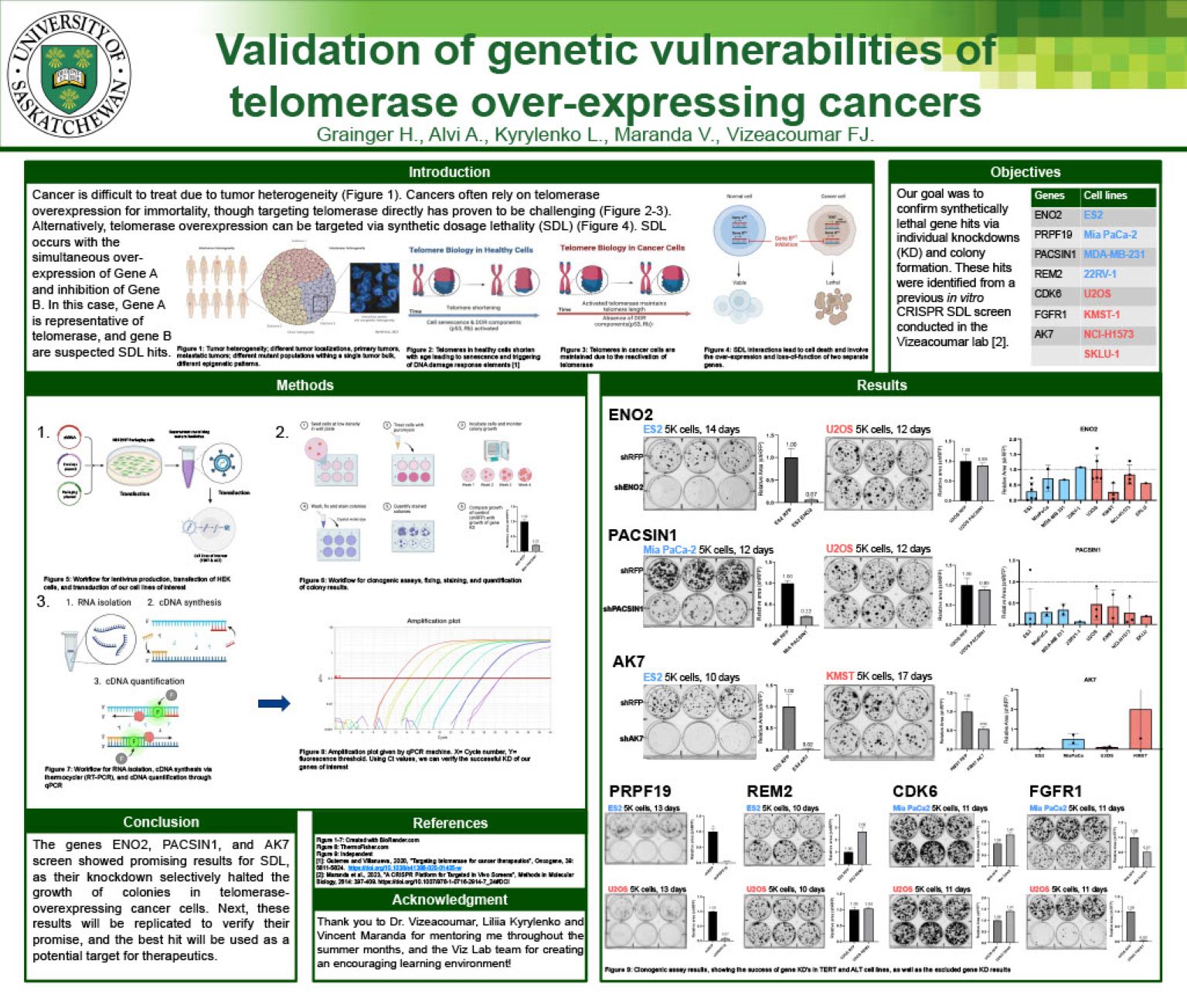
Validation of genetic vulnerabilities of telomerase-overexpressing ovarian cancers
Harmony Grainger
Ovarian clear cell carcinoma (OCCC) is a subtype of ovarian cancer, representing 10-13% of cases. It commonly involves activating mutations in the telomerase reverse transcriptase (hTERT) promoter, leading to its overexpression, aiding tumorigenesis (1). hTERT overexpression is common in 85-90% of cancers, making this a promising therapeutic target (2-9). This project uses a genetic approach called synthetic dosage lethality (SDL) to indirectly target hTERT overexpression. Specifically, where secondary gene inactivation becomes lethal to cancer cells only when hTERT is overexpressed. The hypothesis is that genes whose loss-of-function causes lethality, only when hTERT is overexpressed, represent targetable vulnerabilities in OCCC tumors. Using CRISPR/Cas9 and shRNA screens, the entire genome was screened to identify SDL targets specific to telomerase-overexpressing cells (11-14). Seven target genes identified in the previous screen were individually knocked down in four hTERT- overexpressing cancer cell lines and four control cancer cell lines (using alternative lengthening of telomere mechanism). Clonogenic assays were performed to assess cell growth, viability, and clonogenicity. Among the identified genes, three (ENO2, PACSIN1 and AK7) showed selectivity for impairing cancer growth in hTERT-overexpressing cell lines. This study provides new insights into potential therapeutic targets for OCCC and for the development of novel cancer therapies.
